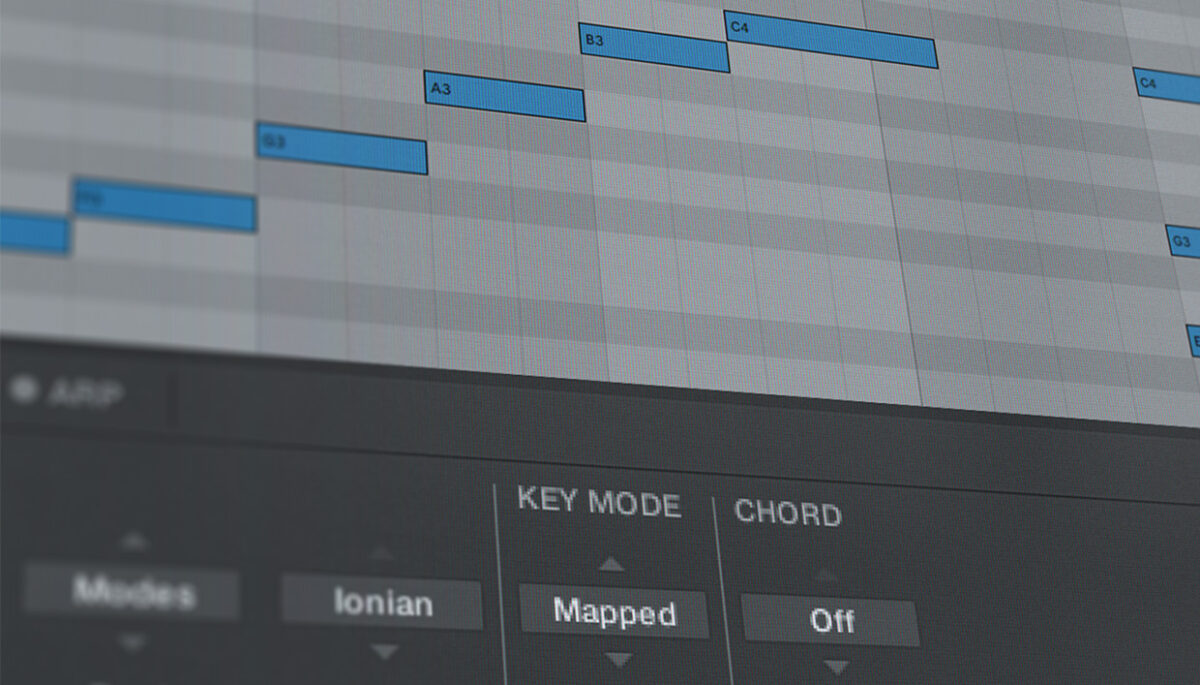
As songwriters and composers, we want to steep our work in a variety of flavors. But we can often find ourselves feeling trapped in the sonic limits of the basic major or minor scales. So how can we expand our musical vocabulary to spice up our compositions? The use of music modes can be a powerful solution to that problem.
Scales serve as a backbone to composition. The scales we embrace shape the very essence of the melody and harmony in our music. That’s precisely why a deep understanding of music modes becomes crucial for unlocking a world of expressive possibilities. By gaining a deeper understanding of modes, we can break free from constraints, and infuse our compositions with a rich tapestry of tonalities and captivating textures.
Jump to these sections:
- What are modes in music?
- How many modes are there?
- How can music modes help with songwriting and music production?
Follow along with this tutorial using Komplete Start, a free bundle of virtual instruments, sounds, and synths to get you started.
What are modes in music?
In music theory, modes refer to different scales or tonalities that are derived from the major scale. We’re assuming you know what the major scale is, but if you need to brush up on your basics, check out this guide on getting started with music theory.
Music modes occur when we take the notes of the major scale and set different roots for those notes while retaining the same intervals. You might be familiar with the concept of a relative minor—like how C major and A minor share the same notes. Modes share this concept but every mode starts on a different degree of the scale.
By doing that, each mode provides a set of specific pitches or intervals that give the music a distinct character or mood. They can generally be divided up into major, minor, and diminished modes.
Each mode is based on a different starting note, called the tonic, and has a unique pattern of tones (T) and semi-tones (ST) between its notes.
How many modes are there?
There are seven modes of the major scale. In order they are: Ionian, Dorian, Phrygian, Lydian, Mixolydian, Aeolian, and Locrian. Each mode has distinct characteristics. Those characteristics cause them to evoke different emotions and moods. Let’s break down the formula for each mode and listen to them in context.
All modes and chord progression examples below are in the key of C for ease of comparison.
1. Ionian (major)
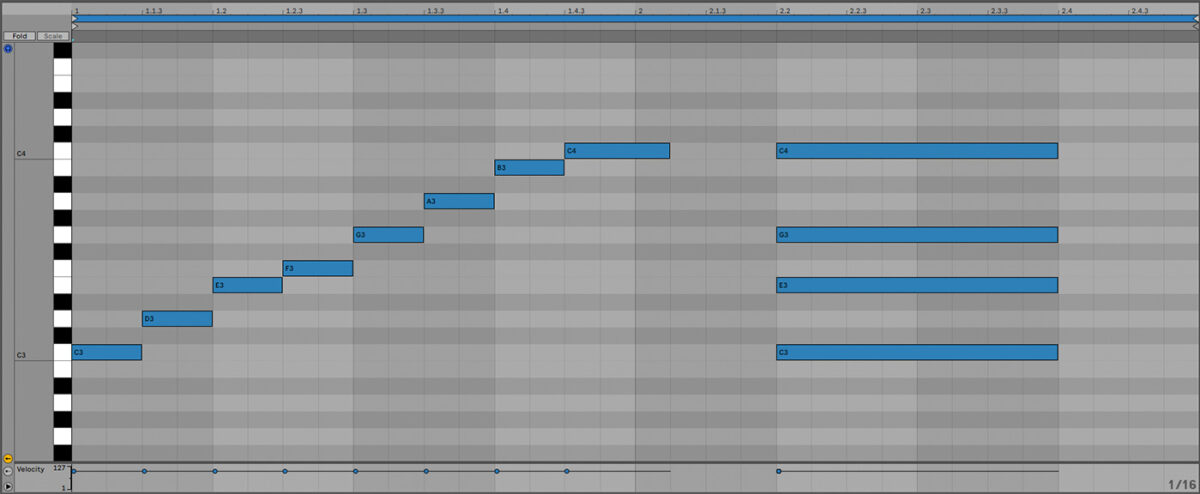
You may be able to hear that the Ionian mode is essentially the same thing as the major scale. We only refer to it as “Ionian” in the context of the other modes. It has a bright, stable sound, and has been used in countless compositions and songs. Its formula is T-T-ST-T-T-T-ST.
The chord progression found in “Sunflower” by Post Malone and Swae Lee is I-IV-ii-IV or C-F-Dm-F.
2. Dorian (minor)
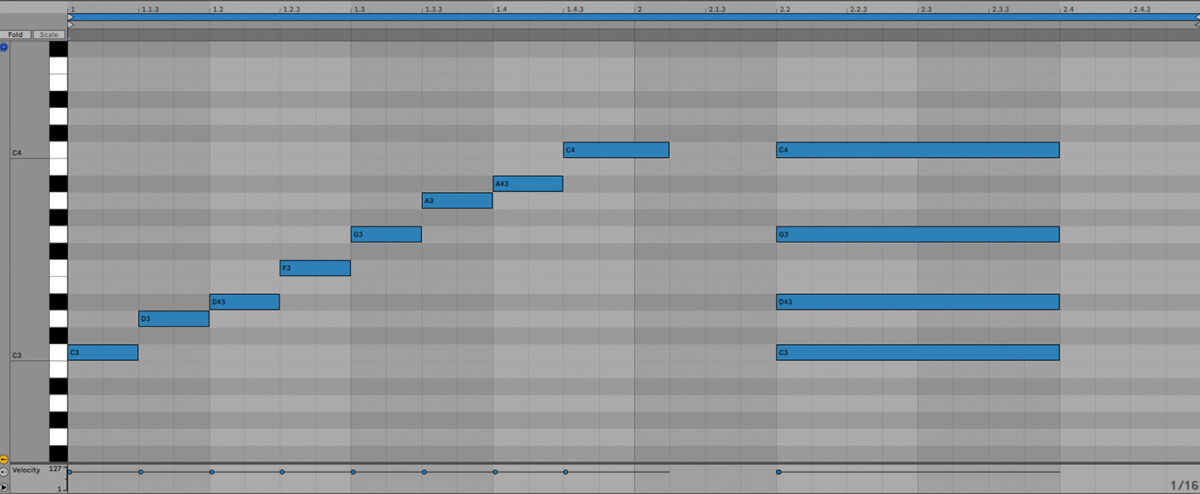
This mode is very similar to the natural minor scale, except for the fact that it has a raised 6th degree. That raised 6th gives the scale a whimsical sound which makes it brighter than the natural minor. The Dorian formula is T-ST-T-T-T-ST-T.
The chord progression in “Riders on the Storm” by The Doors is i-IV or Cm-F.
3. Phrygian (minor)
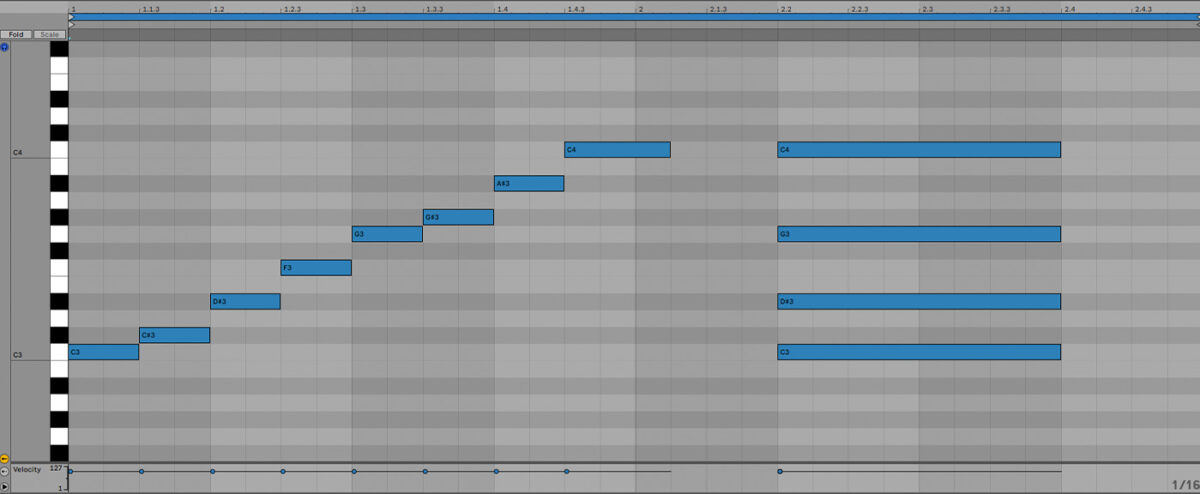
Here we have a darker variation of the minor scale—the Phrygian. This mode is the same as the natural minor but flattens the 2nd degree of the scale. While it is often used to elicit tension or foreboding, it is also prevalent in Spanish and flamenco music. The Phrygian is made up of ST-T-T-T-ST-T-T.
“HUMBLE.” by Kendrick Lamar uses a Phrygian chord progression of i-bII-i-iv or Cm-Db-Cm-Fm.
4. Lydian (major)
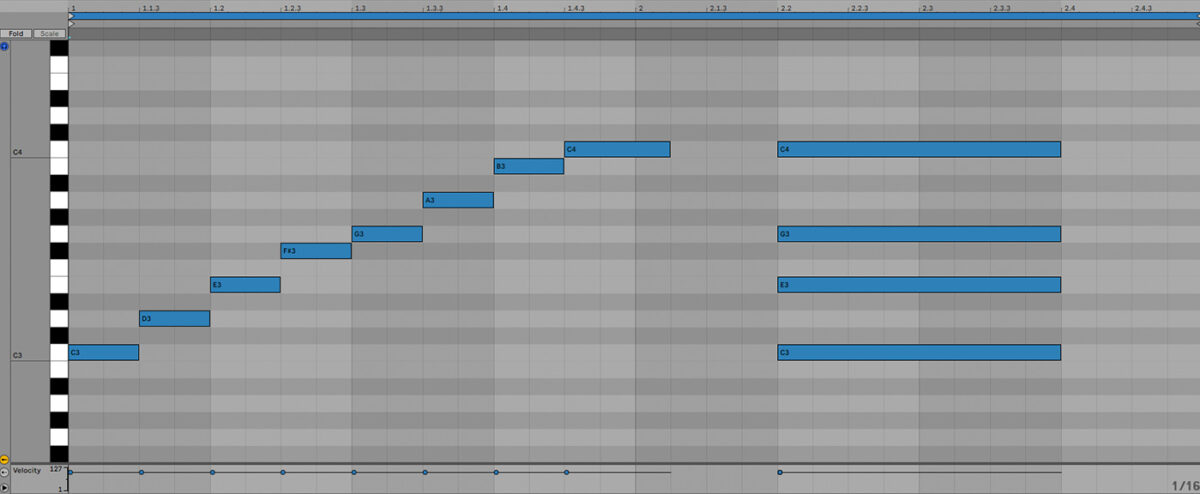
The dreamy and bright Lydian mode incorporates the same intervals found in the major scale except for its raised 4th degree. The ethereal and light sound of this mode is often utilized in film scores. The Lydian pattern is T-T-T-ST-T-T-ST.
The major II chord found in “To Build a Home” by The Cinematic Orchestra exemplifies the tone of a Lydian chord progression: I-V-II or C-G-D.
5. Mixolydian (major)
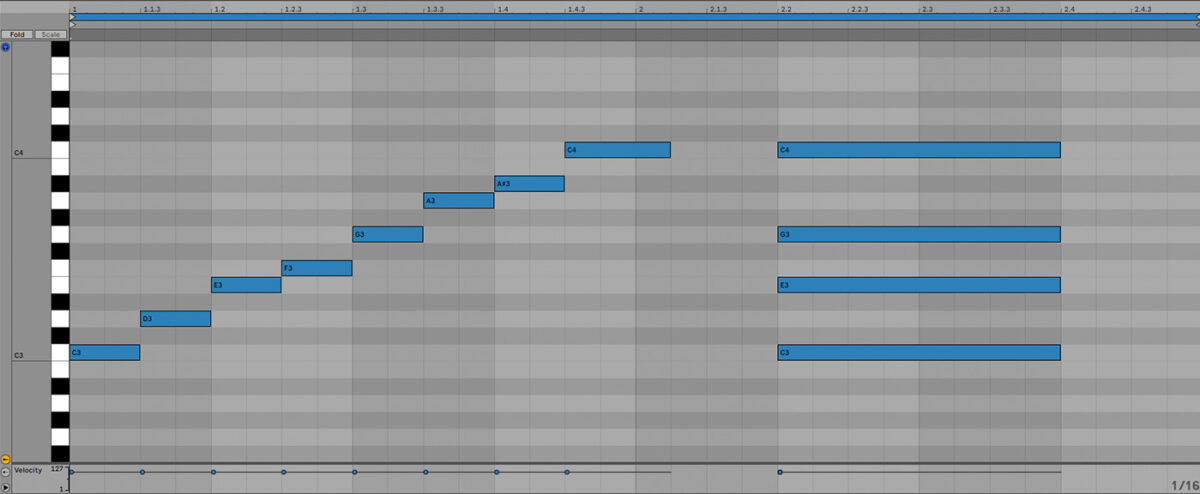
A Mixolydian is similar to the major scale, but it features a flattened 7th. This gives the mode a bluesy edge. You can hear it cropping up a lot in rock and pop music. The formula for Mixolydian is T-T-ST-T-T-ST-T.
The Mixolydian chord progression in “Royals” by Lorde is i-VII-IV or C-Bb-F.
6. Aeolian (minor)
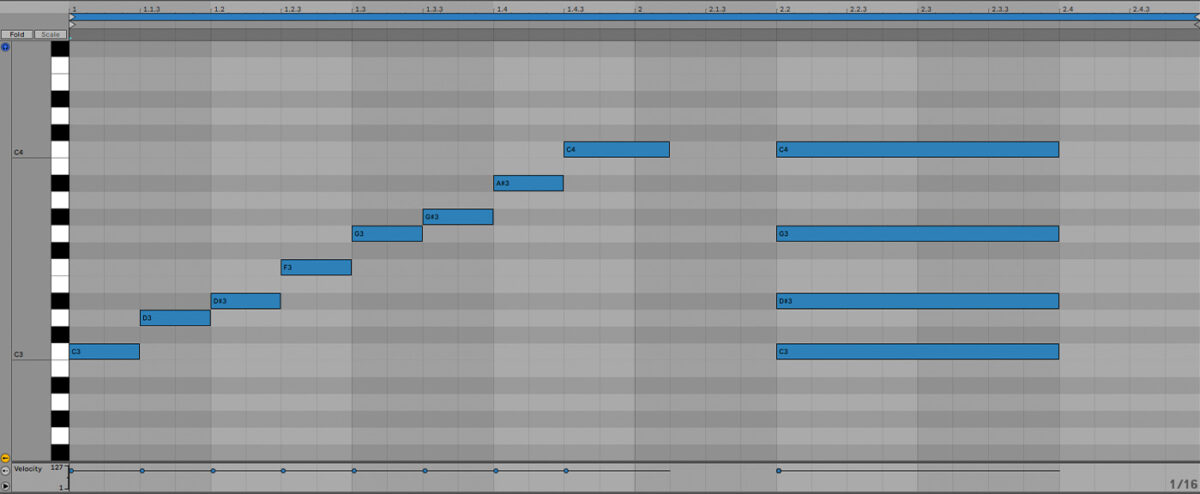
The Aeolian mode is used extensively across the genre spectrum as it is made up of the same notes as the natural minor scale. It is sometimes referred to as the relative minor (check out this article about the circle of fifths if you haven’t heard of that concept before) and its sound is often characterized as melancholic or sad. Its formula is T-ST-T-T-ST-T-T.
The chord progression example from “Kammy (like i do)” by Fred again… is i-VII-v-VI-VII-i or Cm-Bb-Gm-Ab-Bb-C.
7. Locrian (diminished)
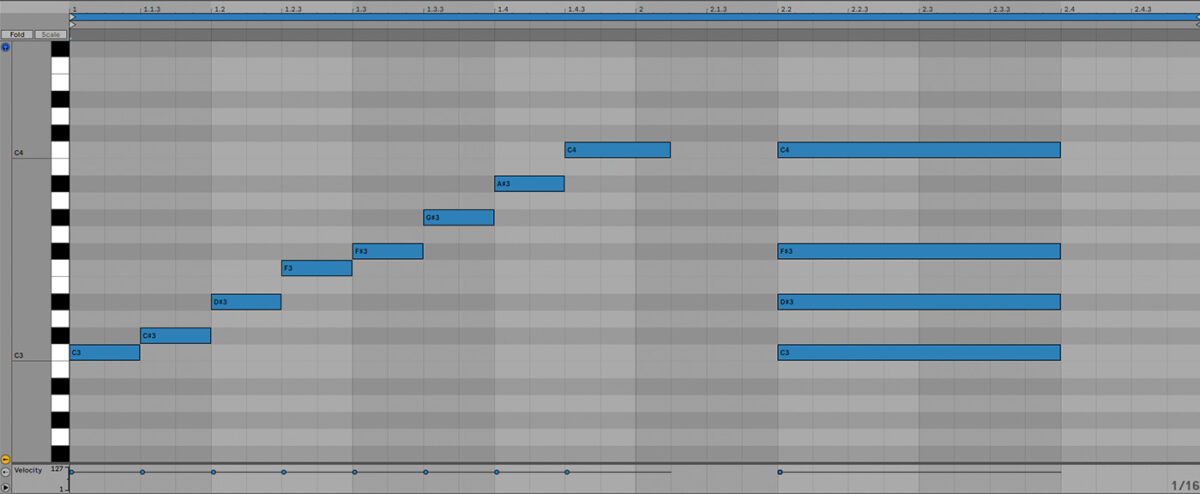
The final mode—the Locrian—is seldom found in popular music because of its dark and unstable sound. Clever songwriters have, however, managed to embrace that darkness in a subtle way that serves the song. It is the only mode (of the major scale) to feature a diminished 5th interval.
“Army of Me” by Björk features the Locrian Chord progression: iii-bii-i or Ebm-Dbm-Cm. The diminished 5th degree of the scale is also very prevalent in the synth bassline.
How music modes help with songwriting and production?
Now that you have a grasp on the basics, you may be asking yourself “What are modes in music used for?”
Incorporating modes into your songwriting can help you to:
1. Establish a tonal center (create atmosphere)
Scales and harmonies give us the comforting sense of a ‘home’ pitch. This specific pitch area lets our ears achieve solace when certain melodies and their harmonic movements reach a resolution. The major and minor scales, with their common chord progressions and resolutions, feature ubiquitously in popular music.
However, when we enter the modal world we discover that alternative tonal centers exist. These tonal centers arise from the altered intervals within each mode, giving us the potential to create diverse atmospheres within our compositions.
Let’s look at the Phrygian mode for example, where the harmonic resolution feels considerably less stable compared to the traditional harmonic minor scale. This distinctive characteristic infuses the Phrygian mode with an aura of darkness and tension, elevating the emotional impact of darker music.
2. Add harmonic color (use different chord progressions)
If you have your conventional pop chord progressions down, you might want to explore the more ambiguous arena of modal chord progressions.
Modal chord progressions deviate from the well-trodden path of the tonic-dominant relationship that is extensively present in music. Instead, modal chord progressions embrace the idiosyncrasies of each mode, weaving their distinct characteristics into the fabric of harmonic movement.
3. Evoke specific emotions
Music modes have the ability to evoke emotions through their unique tonal characteristics. The intervals and scale degrees present in each mode contribute to its distinct emotional quality.
Each mode can elicit a particular emotional response when employed by the composer. The Dorian mode can feel wistful because of its raised 6th while the Locrian can feel unsettling due to its flattened 2nd and 5th degrees.
Modes can also conjure a sense of place as particular modes have been implemented in various cultures and contexts throughout history.
4. Create contrast (transitioning to different modes)
We can add excitement to our music by using modal interchange. This is when we borrow chords or harmonies from related modes. By applying chords or progressions from different modes into a composition simultaneously, musicians can introduce fresh harmonic colors.
For example, borrowing a chord from the Dorian mode while in a major key can add a slightly melancholy flavor to the harmony of the song. This kind of modal borrowing occurs regularly in R&B music.
Start experimenting with modal flavor
Modes can be a game-changer when it comes to expanding our musical vocabulary. They expand the tonalities and moods of our music in exciting ways that simply are not possible if we confine ourselves to the major and minor scales only.
We’ve laid out the theory, so why not play around with modes yourself and put what you’ve learned into practice?
Did you know that Komplete Kontrol (included in Komplete Start) features a scale mode? Use this to effortlessly interweave music modes into your compositions without having to learn them off-hand.
















